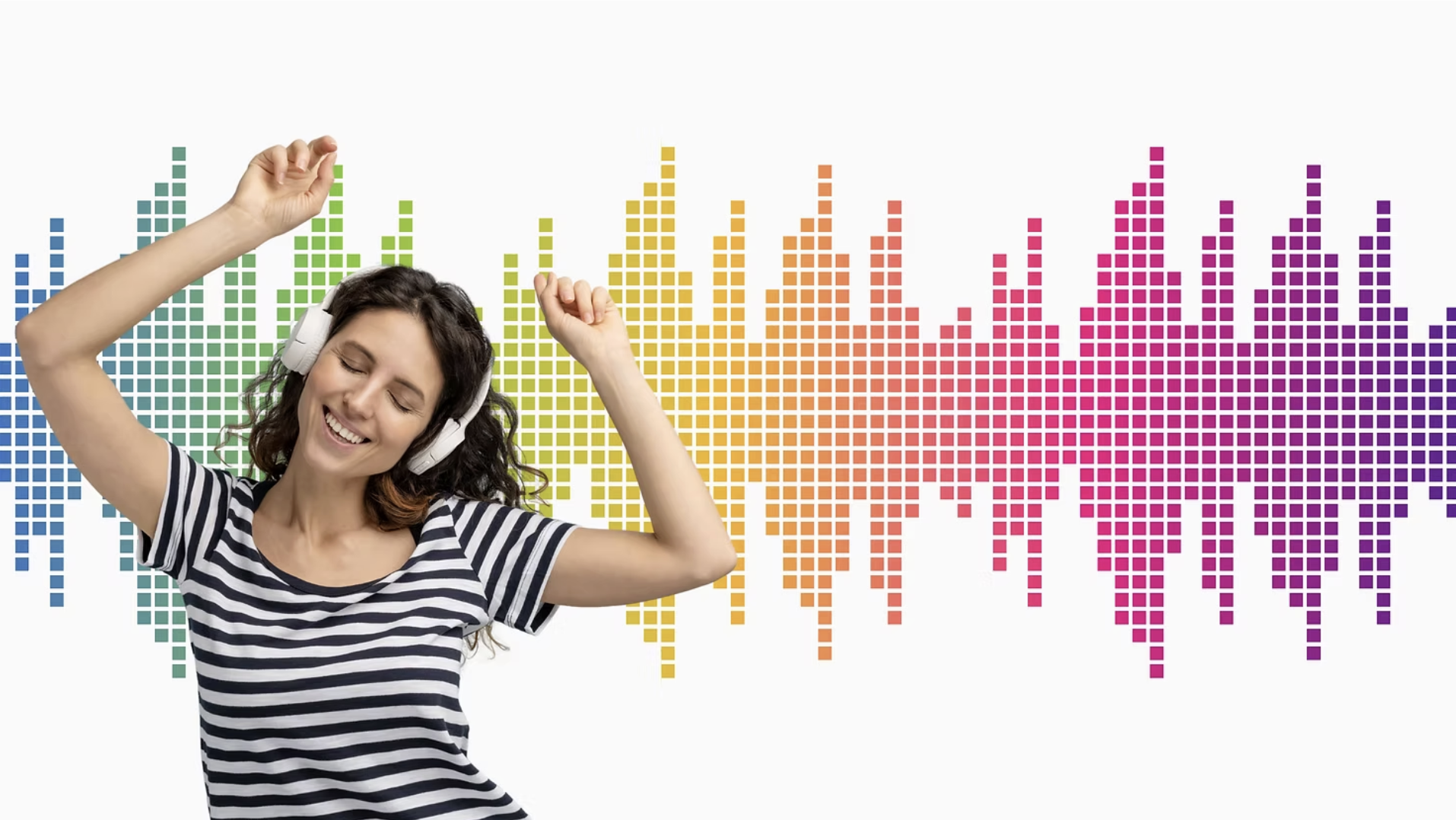Fine-Tune Your ADHD Brain with the Colors of Sound
What if you had a simple tool to block out distractions, provide your brain with the stimulation it needs, help you relax and even improve your sleep?
The various colors of sound might be exactly what you're looking for!
Sound colors can drown out ambient noise, making it easier to study or complete tasks. Because they don’t have pitch or lyrics, they don’t emotionally pull the listener in, allowing for better focus. The right sound color can reduce stress, enhance concentration and even improve sleep quality.
“Our primitive brains kick in when we recognize sounds in silence. Listening to the sounds of a person walking can trigger our brains into thinking we are in danger. Noise acts as a replacement for silent environments, providing an abundance of sound information to keep our brains entertained.”
– Brian Clark
How Can Noise Colors Help ADHD?
Noise colors can stimulate the ADHD brain, potentially jumpstarting dopamine production, which makes it easier to focus and pay attention.
These sound colors also act like a blanket, covering background noise and helping individuals with ADHD sustain attention, focus and maintain a steady pace.
Specific noise colors, like pink and brown noise, are especially beneficial for improving sleep.
White and pink noise can promote relaxation and calm the mind, which is often helpful for people with ADHD, who may struggle to wind down.
What Are the Colors of Sound?
Each noise color has unique properties that can affect the brain differently. Here's a breakdown of the most common sound colors:
White Noise
Description: Constant background noise, similar to static, such as a fan or air conditioner.
Benefits: Reduces the time it takes to fall asleep, promotes relaxation and quiets an active mind.
Research: A 2017 study found white noise reduced sleep onset time by 38% and improved sleep quality overall.
Pink Noise
Description: Lower-pitched than white noise, with a flat, even sound like steady rain, a waterfall, wind, rustling leaves or a heartbeat.
Benefits: Helps with falling asleep, staying asleep longer, blocking disruptive noise, and improving memory.
Research: A study of 13 trials with 335 participants found white or pink noise improved cognitive performance in children and adults with ADHD.
Brown Noise
Description: Deep, bass-heavy sound with less hiss than white noise, resembling a strong waterfall, low roaring, soft rumbling or thunder.
Benefits: Blocks noise, improves focus and is considered the best sound color for ADHD-related sleep issues.
Additional Uses: Known for its soothing and healing properties, promoting calm and deep relaxation.
Green Noise
Description: Mimics the sounds of nature, such as a forest or ocean waves.
Benefits: Masks background noise, promotes relaxation, supports meditation or yoga, and enhances productivity.
Blue Noise
Description: Higher-pitched noise that is sharper and more focused compared to white noise.
Benefits: Enhances focus and concentration, especially for mentally demanding tasks.
Gray Noise
Description: Similar to pink noise but specifically designed to treat tinnitus (ringing in the ears) and hyperacusis (sound sensitivity).
Benefits: Helps individuals with rare hearing disorders manage overwhelming or painful sound experiences.
Black Noise
Description: Simulates silence but still provides subtle background noise.
Benefits: Useful as a calming backdrop for work or relaxation.
Orange Noise
Description: Deep and soothing tones.
Benefits: Acts as an effective sleep aid for ADHD brains, helping to provide focus and calm for overactive minds.
Binaural Beats
Description: Two tones of slightly different frequencies played in each ear; the brain synthesizes the difference between the two tones, creating a “binaural beat.”
Benefits: Promotes the same mental state as meditation, reducing stress and anxiety while enhancing creativity and focus.
How Do Noise Colors Work?
The colors of sound help limit distractions and replace silence with auditory stimulation that keeps the brain engaged. By canceling out random background noise, sound colors allow you to focus on specific tasks.
Noise colors can improve attention, sleep, calmness and relaxation.
Try the Colors of Sound for ADHD
Sample different sound colors to see which ones work best for you. Whether you need help focusing, relaxing or sleeping, noise colors can be a powerful addition to your ADHD toolkit.
Resources
Do Binaural Beats Have Health Benefits? – Jacquelyn Cafasso, Healthline
Brown, White, and Pink Noise: What They Are and How They Can Help ADHD – Margie DeSantis, Understood
Your ADHD Brain Probably Loves Brown Noise – Carol Fleck, ADDitude
These Soothing Noises May Help Your ADHD Brain Get Better Sleep – Calm
Brown Noise vs. White Noise: Which Can Help You Get a Good Night’s Sleep? – McKenzie Dillon, CNET
What is Green Sound and Green Noise? – Lencore
9 Different Types of Noise: The Colors of Sound – Brian Clark, Music Wave
Balance App – Free noise colors.

